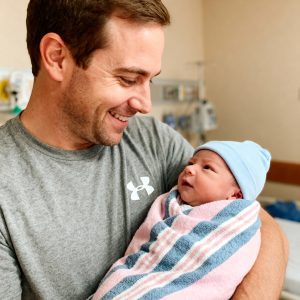I never thought a seaside costume parade in Brighton could spark anything but laughs. My daughter insisted on going as Queen Elizabeth—tiny crown, toy corgis prancing at her heels—while my son marched beside her in a bright-red guardsman’s jacket, plastic bearskin hat askew, clutching a toy rifle. To them, it was pure make-believe; to me, a picture-perfect parenting win.
The crowd ate it up. Tourists applauded, locals chuckled, and one gentleman even pressed shortbread into my son’s glove “for Her Majesty’s guard.” Every cheer felt like a small medal pinned to my parental chest.
We were nearing the end of the route, kids still buzzing with excitement, when I noticed her—an older woman stationed at the corner of the square, arms folded, gaze fixed on us like a hawk tracking its prey.
Close up, she looked mid-sixties, iron-gray hair tucked beneath a too-tight scarf, the kind of practical coat that dares English weather to do its worst. Her eyes swept from my daughter’s crown to my son’s toy rifle, and something in her expression chilled the warm October air.
“Excuse me,” she called, voice clipped as a dressmaker’s shears.
I paused, one foot in mid-step. “Yes?”
“I hope you’re not teaching those children to celebrate the monarchy,” she said, each syllable polished to an edge.
I stared, baffled. This was a playful parade, not a constitutional debate.
“The monarchy,” she repeated, as if I’d missed the obvious. “Centuries of power, privilege, oppression. And you’ve dressed them as heroes of that system.”
Heat climbed my cheeks. Kids giggled beside me, blissfully unaware that their pageant had turned political.
Her voice rose. “You should be teaching them to question institutions, not glorify them.”
I bristled but forced calm. “They’re playing dress-up. They don’t grasp all that history yet.”
She crossed her arms tighter. “And that’s the very problem.”
Part of me wanted to fire back, yet a sliver of her argument lodged in my mind. We had traveled to soak up British culture—tea rooms, castles, witty pub signs—but skirted harder truths.
Still, I wouldn’t let a stranger tarnish my kids’ joy.
“I respect your view,” I said evenly, “but they’re children enjoying a storybook moment. Nuance comes with age.”
She scoffed, disappointment etched in every line of her face.
Before I could add more, my daughter twirled, skirts swirling. “Mummy, look—I’m Queen of the parade!”
For an instant, the woman’s stern mask cracked. Then she muttered, “Exactly my point,” and strode off, heels tapping a final verdict on the cobblestones.
The laughter resumed around us, but something inside me tilted. Fun costumes, yes—but also a conversation I’d never meant to start.
That night, curiosity kept me scrolling through articles on empire, colonialism, and the crown’s complicated legacy. Embarrassment mingled with insight. History, it seemed, wore more than one face.
I decided guilt was useless; growth, essential. I would raise kids who questioned politely and listened widely.
Months later, my daughter came home asking, “Why do people love the queen if she wasn’t fair to everyone?” The moment had arrived. We dove in together—good deeds, dark chapters, and everything between.
Uncomfortable encounters can be doorways, I told her, if we’re brave enough to walk through.
So yes, one woman’s rebuke stung—but it nudged me toward deeper conversations I’d been postponing. Parenting, I’ve learned, isn’t about shielding kids from every thorny truth; it’s about showing them how to handle the thorns when they appear.
If you’ve ever felt that jolt—the moment someone challenges what you thought was harmless fun—lean in. Read more. Talk more. Grow. And if this story sparks something in you, share it. We could all use a reminder that learning rarely happens in our comfort zone.





